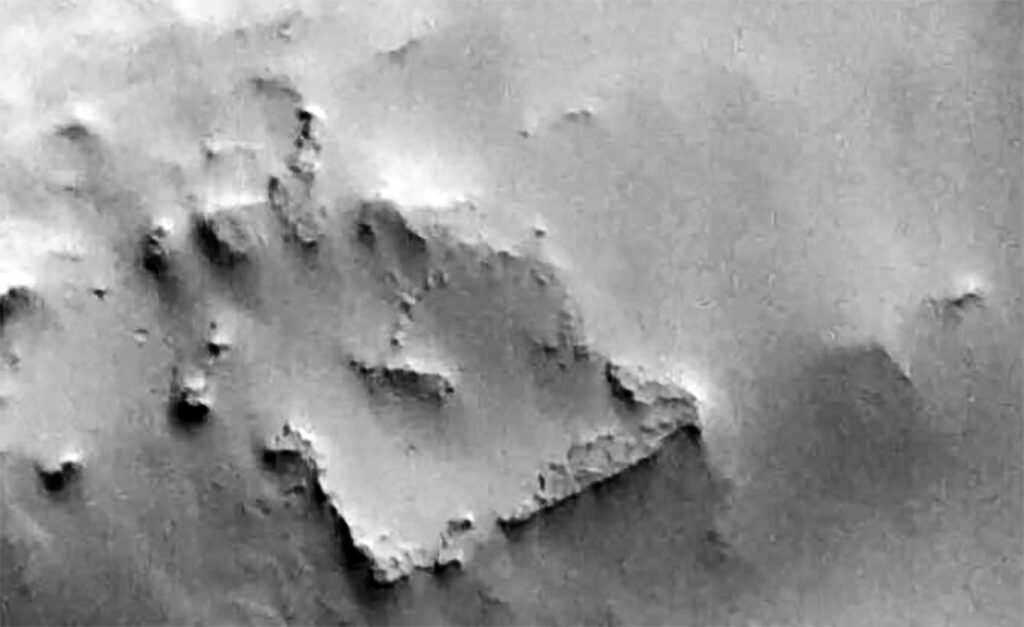Social media is buzzing with fascination over a peculiar square-shaped formation on Mars, captured by the Mars Global Surveyor (MGS) mission between 1997 and 2006. Influential figures like Elon Musk and Joe Rogan have amplified the intrigue by sharing cropped images, prompting debates about whether this geometric shape is a natural occurrence or evidence of alien structures. Dr. Sarah Johnson, a planetary geologist at NASA’s Jet Propulsion Laboratory, attributes such formations to natural geological processes, including erosion and volcanic activity, rather than artificial creation.
Humans often experience pareidolia, where they recognize familiar patterns in random images, leading observers to see potential signs of life in Martian landscapes. Historical interest in Mars has existed since the 1800s, with early ideas about “canals” suggesting intelligent civilizations, which later turned out to have natural explanations.
The potential for structures like the Martian square can arise from the planet’s geological forces, similar to natural formations on Earth. Online speculation about the square’s origin has increased, with calls for human missions to Mars to investigate further, though experts caution against jumping to conclusions about alien life without substantial evidence.
Despite the allure of human exploration, which holds promises of uncovering ancient civilizations, significant financial and technical challenges remain. Presently, advanced rovers and orbiters continue to gather valuable data, suggesting that patience and methodical analysis are key to understanding Mars’s geological history. The square formation symbolizes the ongoing quest for knowledge about the universe, blending curiosity with scientific evidence.
Source link


